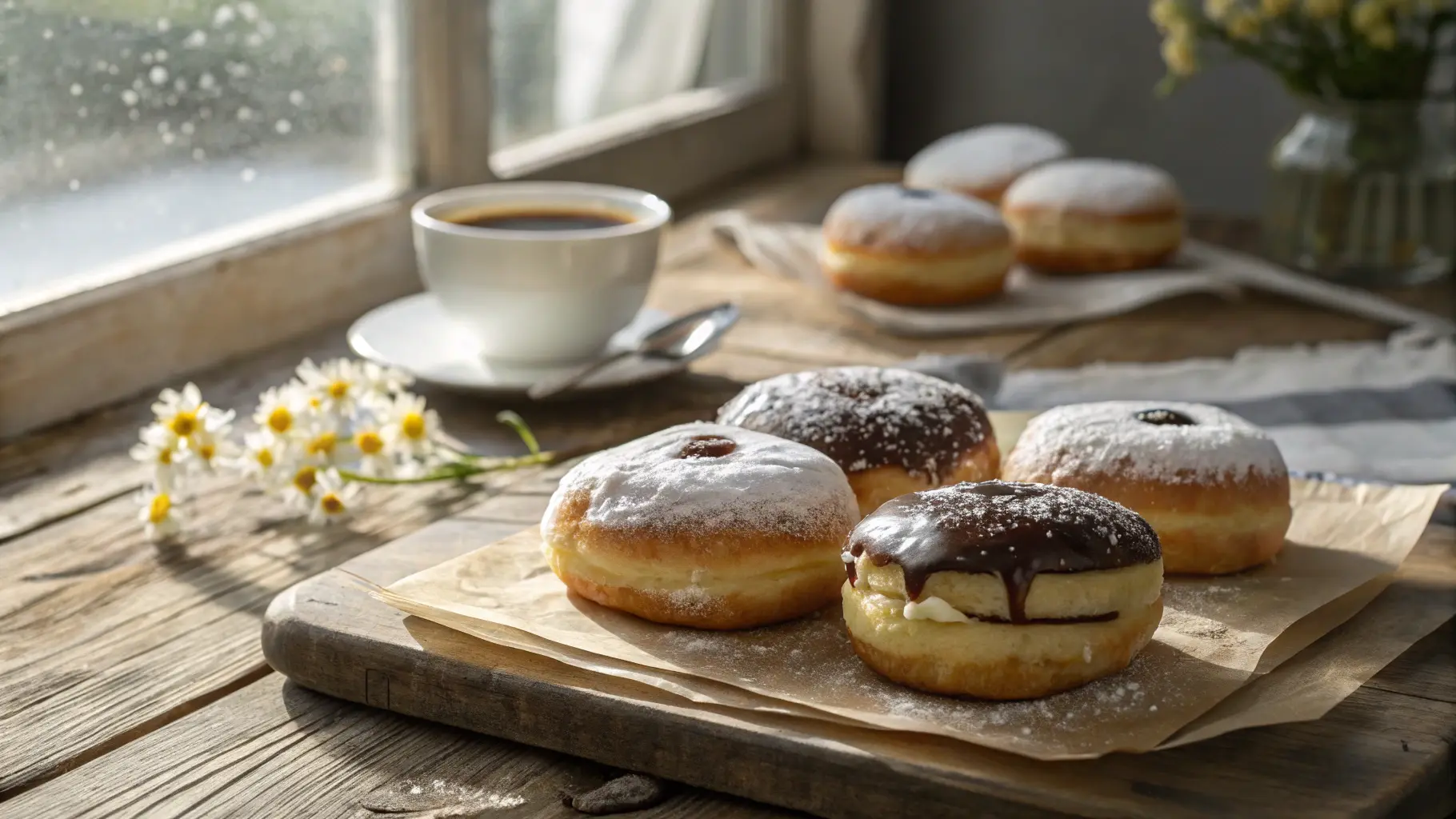Imagine biting into a crusty, golden brown loaf with a tangy flavor, knowing it’s completely gluten-free. For those with celiac disease or gluten sensitivities, gluten free sourdough bread offers a safe, tasty alternative to traditional bread. This article breaks down everything you need to know—why it’s special, how to make it, and tips to get it right—without overwhelming you.
What Is Gluten Free Sourdough Bread?
Sourdough bread usually relies on wheat flour, which contains gluten. However, gluten free sourdough bread swaps that for a flour blend—like rice flour or buckwheat flour—safe for gluten-sensitive folks. It still uses a sourdough starter, a mix of flour and water fermented with natural yeast, to create that signature tangy taste.
The process mimics traditional sourdough but adjusts for gluten-free needs. For example, binders like psyllium husk powder replace gluten’s stretchy texture. The result? A loaf that’s crusty outside, chewy inside, and kind to your stomach.
Why Choose Gluten Free Sourdough?
You might wonder: why not just buy gluten-free bread from the store? For starters, homemade gluten free sourdough tastes better—think fresh, golden brown crust versus a dry, crumbly store-bought slice. Plus, it’s often healthier.
Studies suggest sourdough fermentation can lower the glycemic index of bread, making it easier to digest (Penn State University). For those with gluten sensitivities, this could mean less bloating (National Institutes of Health). And since you control the ingredients, you avoid preservatives and additives common in packaged options.
Benefits at a Glance
- Taste: Tangy, rich flavor from natural fermentation.
- Texture: Crusty outside, soft inside—thanks to gluten free flours like brown rice or potato starch.
- Health: Potentially easier on digestion, especially for celiac disease sufferers.
- Control: You pick organic or dedicated gluten free ingredients.
Ingredients You’ll Need
Making gluten free sourdough bread starts with the right supplies. Don’t worry—it’s simpler than it sounds. Here’s what you’ll need for a basic loaf:
- Gluten Free Sourdough Starter: A mix of flour and water, fermented over days. Use brown rice or buckwheat flour.
- Gluten Free Flour Blend: Combine rice flour, potato starch, and tapioca flour for structure.
- Psyllium Husk Powder: Acts as a binder—about 1–2 tablespoons per loaf.
- Water: Filtered is best; aim for 70–80% hydration (around 350–400 ml for 500g flour).
- Sea Salt: Enhances flavor—1–2 teaspoons usually does it.
- Optional: A teaspoon of honey or sugar to feed the starter.
You can find these at most grocery stores or online. Look for “dedicated gluten free” labels to avoid cross-contamination.
How to Make a Gluten Free Sourdough Starter
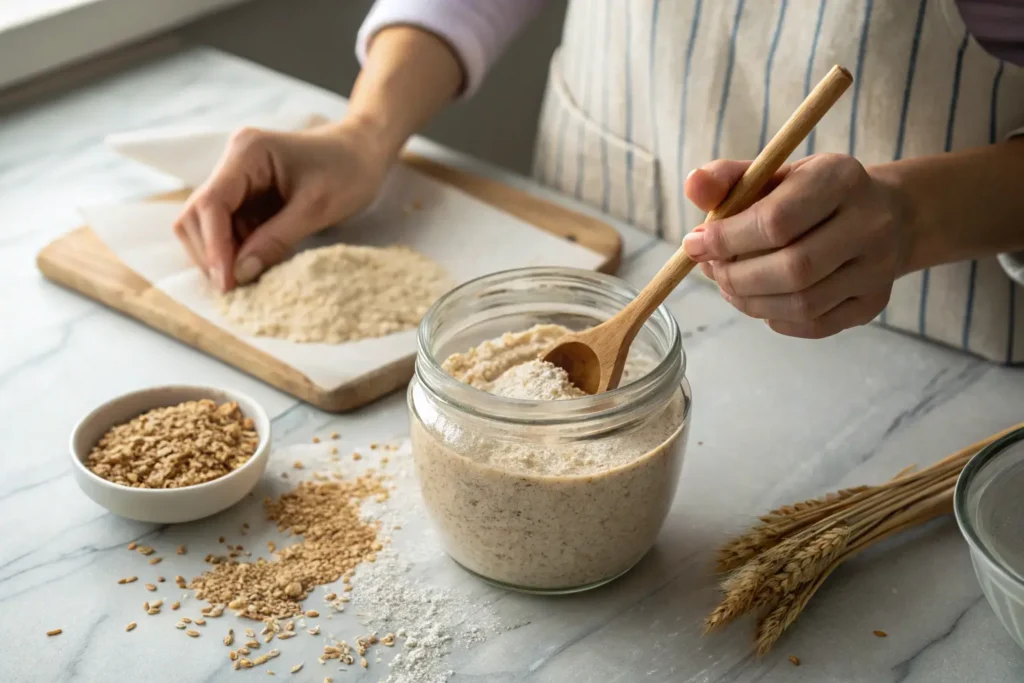
Before baking, you need a starter. It’s the heart of any sourdough recipe. Here’s a simple way to get it going:
- Day 1: Mix 50g gluten free flour (like brown rice) with 50ml water in a jar. Stir well, cover loosely, and let it sit at room temperature.
- Day 2: Add another 50g flour and 50ml water. Stir again. You might see tiny bubbles—that’s good!
- Days 3–7: Repeat daily. By day 5 or 6, it should smell tangy and double in size after feeding.
Once it’s active (bubbly and rising), you’re ready to bake. If it’s slow, try a warmer spot—around 75°F works well.
Starter Troubleshooting
- Not Rising? Use warmer water (not hot—below 110°F) or more frequent feedings.
- Smells Bad? A vinegary scent is normal, but toss it if it’s like nail polish—something’s off.
Step-by-Step Gluten Free Sourdough Bread Recipe
Ready to bake? This recipe makes one loaf in about 4–5 hours (plus overnight rest). It’s designed for beginners, so don’t stress.
What You’ll Need
- 100g active gluten free sourdough starter
- 400g gluten free flour blend (e.g., 200g rice flour, 100g tapioca, 100g potato starch)
- 2 tbsp psyllium husk powder
- 1.5 tsp sea salt
- 350ml water (adjust for dough consistency)
- 1 tsp honey (optional)
Instructions
- Mix the Dough: In a large bowl, combine starter, water, and honey. Add flour, psyllium husk, and salt. Stir until it’s sticky but smooth—about 2 minutes.
- Rest: Cover the bowl with a damp cloth. Let it sit for 30–60 minutes. This helps hydration.
- Shape: Dust a surface with rice flour. Shape the dough into a round loaf. It won’t stretch like wheat dough, so don’t overwork it.
- Proof: Place it in a floured basket or bowl. Cover and let it rise for 3–4 hours—or overnight in the fridge for better flavor.
- Preheat: Heat your oven to 450°F with a Dutch oven inside for 30 minutes.
- Bake: Carefully transfer the dough to the hot Dutch oven. Score the top with a knife. Bake covered for 20 minutes, then uncovered for 20–25 minutes until golden brown.
- Cool: Let it cool for 1–2 hours. Cutting too soon makes it gummy.
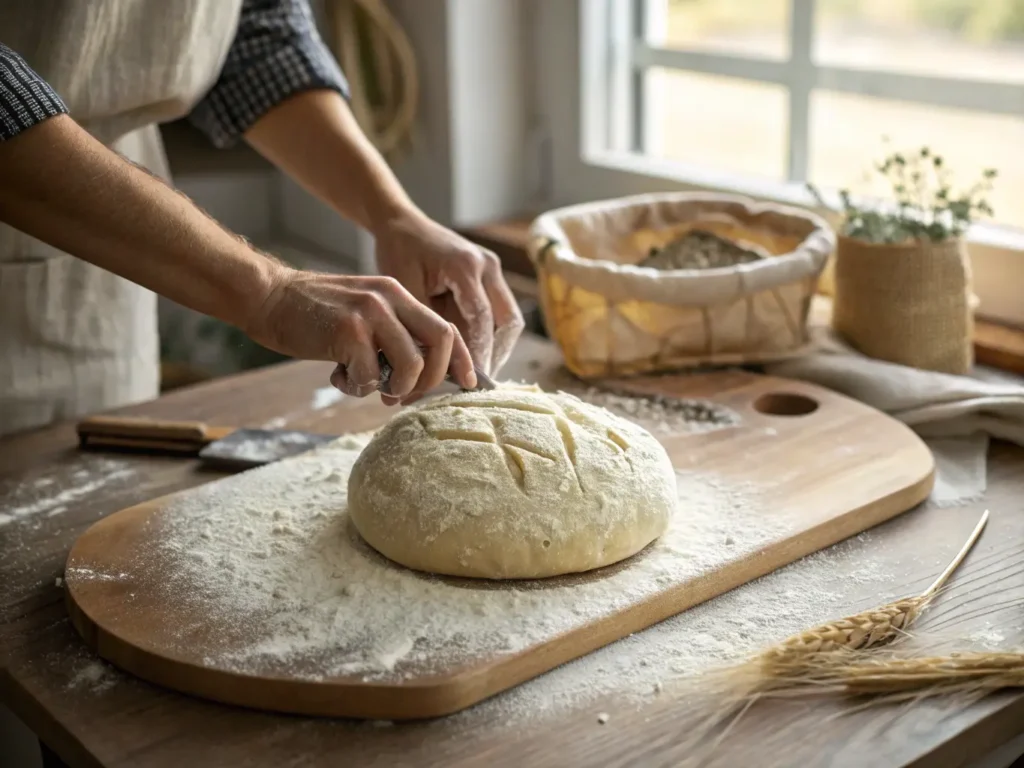
Your kitchen will smell amazing, and you’ll have a loaf worth bragging about.
Tips for the Perfect Loaf
Gluten free sourdough can be tricky, but these pointers help:
- Hydration Matters: Gluten free flours soak up more water. Start with 70% hydration (350ml water to 500g flour) and tweak as needed.
- Use a Scale: Measuring by weight (grams) beats cups for accuracy.
- Don’t Skip Psyllium: It’s key for structure. Xanthan gum works too, but some avoid it due to sensitivities.
- Test Doneness: Tap the bottom—it should sound hollow. Or check for 205°F inside with a thermometer.
Experiment a bit. Every flour blend behaves differently.
Common Mistakes to Avoid
- Too Much Water: Dough turns soupy. Add flour slowly if it’s too wet.
- Underproofing: Flat loaf? Let it rise longer until it’s puffy.
- Hot Starter: Don’t use it straight from feeding—give it 4–6 hours to peak.
How Does It Taste?
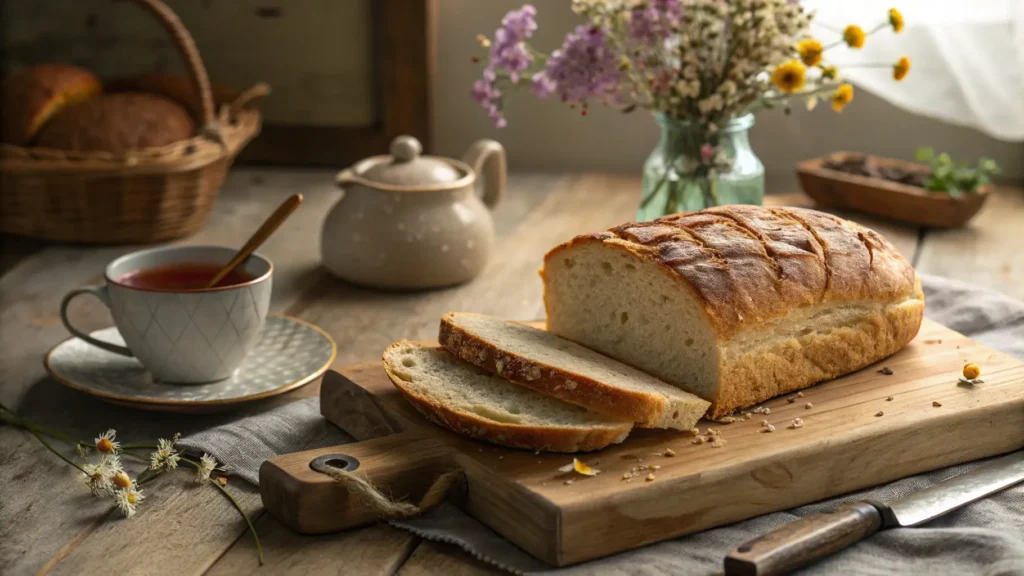
Expect a tangy kick from the starter, balanced by sea salt. The crust should crackle when you slice it, revealing a soft, slightly chewy crumb. It’s not identical to wheat sourdough—gluten free bread has a denser bite—but it’s delicious in its own way.
Pair it with butter, jam, or soup. Toast it for extra crunch. Readers often say it’s the best gluten free bread they’ve tried.
Who Can Enjoy Gluten Free Sourdough?
Anyone can dig in, but it’s a game-changer for specific groups:
- Celiac Disease: About 1% of people have this autoimmune condition (Celiac Disease Foundation). Gluten free sourdough is a safe indulgence.
- Gluten Sensitivities: Up to 6% report issues with gluten (Beyond Celiac). This bread sidesteps that.
- Health Buffs: Fermentation might boost gut health—research is ongoing, but early signs are promising.
Even if you’re not gluten-free, it’s a fun baking challenge with a tasty reward.
Storage and Shelf Life
Fresh gluten free sourdough bread lasts 2–3 days at room temperature in a paper bag, but for a quick bake, check out this cake mix banana bread. Plastic traps moisture, softening the crust. For longer storage:
- Freeze: Slice it, wrap in foil, and freeze for up to 3 months. Toast straight from the freezer.
- Revive: Stale loaf? Sprinkle with water and bake at 350°F for 10 minutes.
Don’t let it go to waste—stale bits make great croutons too.
FAQs
Can Sourdough Bread Be Gluten-Free?
Yes, sourdough bread can be gluten-free if made with a gluten free flour blend—like rice flour or buckwheat flour—and a gluten free sourdough starter. Traditional sourdough uses wheat, but this version skips gluten entirely.
Which Gluten Free Flour Is Best for Sourdough?
Brown rice flour and buckwheat flour top the list for flavor and structure. A blend with tapioca flour or potato starch adds lightness—perfect for that golden brown crust and airy crumb.
Can I Use King Arthur Gluten Free Flour for Sourdough?
Absolutely! King Arthur’s Gluten Free All-Purpose Flour works well in sourdough recipes. Pair it with psyllium husk powder for better texture, and you’re set for success.
Is Sourdough Bread Anti-Inflammatory?
It’s not inherently anti-inflammatory, but fermentation may reduce bloating for some. For gluten sensitivities or celiac disease, gluten free sourdough avoids inflammation triggers like gluten.
Beyond the Basic Loaf
Once you’ve nailed the recipe, get creative—try something sweet like this gluten-free chocolate cake next. Use the same dough for:
- Pizza: Flatten it, add toppings, and bake at 425°F for 20 minutes—or try a cottage cheese pizza crust for another gluten-free twist.
- Pancakes: Mix discard starter with an egg and milk—cook like normal.
- Crackers: Roll thin, cut, and bake at 350°F for 15–20 minutes.
The starter’s versatility is half the fun.
The Science Behind It
Why does gluten free sourdough work? Fermentation breaks down starches, releasing flavor and making nutrients more available (Food Microbiology). Gluten free flours like rice or tapioca don’t stretch, so psyllium husk powder steps in. It gels with water, trapping air bubbles for that airy crumb.
It’s not just bread—it’s chemistry you can eat.
Where to Learn More
Want deeper dives? Check out:
- Books: Gluten-Free on a Shoestring by Nicole Hunn has great recipes.
- Blogs: King Arthur Baking and Minimalist Baker offer tested tips.
For real-time advice, search X for “gluten free sourdough tips”—bakers share fixes there daily. I could dig into specific posts if you’d like, but this covers the basics.
Conclusion: Bake Your Own Today
Gluten free sourdough bread isn’t just for special diets—it’s a treat anyone can enjoy. With a few ingredients, some patience, and this guide, you’re set to bake a golden brown loaf that rivals any bakery. The process is rewarding, and the taste? Unbeatable.
Try it this weekend. Share your thoughts below—did it rise perfectly, or do you need a tweak? Happy baking!
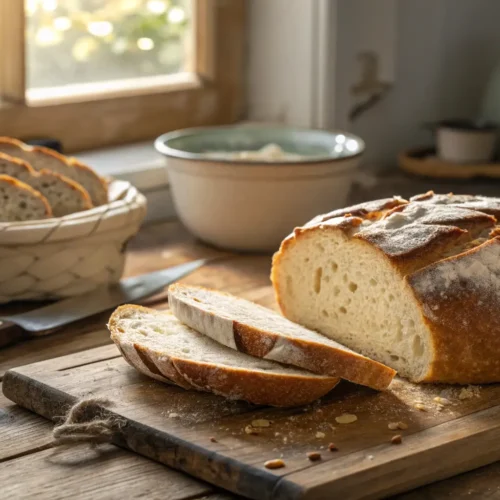
Gluten Free Sourdough Bread Recipe
Ingredients
- 100 g active gluten free sourdough starter made with brown rice flour
- 400 g gluten free flour blend 200 g rice flour, 100 g tapioca flour, 100 g potato starch
- 2 tbsp psyllium husk powder
- 1.5 tsp sea salt
- 350 ml water filtered, adjust for dough consistency
- 1 tsp honey optional, to feed the starter
Instructions
- Mix the Dough: In a large bowl, whisk the active gluten free sourdough starter, water, and honey until combined. Add the gluten free flour blend, psyllium husk powder, and sea salt. Stir with a wooden spoon for 2 minutes until sticky and smooth.
- Rest: Cover the bowl with a damp cloth and let the dough rest at room temperature for 30–60 minutes to hydrate.
- Shape: Lightly dust a surface with rice flour. Gently shape the dough into a round loaf—don’t overwork it, as it won’t stretch like wheat dough.
- Proof: Place the dough in a floured proofing basket or bowl. Cover and let it rise for 3–4 hours at room temperature, or refrigerate overnight for deeper flavor.
- Preheat: Preheat your oven to 450°F (230°C) with a Dutch oven inside for 30 minutes.
- Bake: Carefully transfer the dough to the hot Dutch oven. Score the top with a sharp knife. Bake covered for 20 minutes, then uncover and bake 20–25 minutes more until golden brown.
- Cool: Remove from the oven and cool on a wire rack for 1–2 hours before slicing—cutting too soon makes it gummy.





